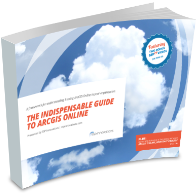Many of our customers and partners attended the first ever virtual Esri User Conference last week. One of the most heavily attended sessions for utilities was titled “Utility Network Management: Introduction to the Utility Network and Trace Network” (note that the link to this session requires a login tied to your attendance at the Esri UC but will eventually be made public to everyone).
Our colleagues Larry Young and Remi Myers presented on the topic including an overview of the, now 3+ year-old, utility network as well an introduction to a new network called the trace network. At SSP, we’ve been blogging about and demonstrating the utility network since 2016 so we’re good there. But this was the first public look at the trace network which was introduced as a new network within ArcGIS Pro with a direct migration from the legacy geometric network. Sounds exciting and easy, right? I think many of our customers stopped listening after that statement because confusion immediately erupted around it being an alternative to the utility network. And that’s why we wanted to set the record straight very quickly!
The trace network is defined as a new network to visualize, manage, and analyze simple connectivity models such as rail and hydro datasets within ArcGIS Pro. Esri published a blog post in association with the UC presentation that is very informational about the new trace network but also talks about the differences from a utility network. Before I dive into some of the details, I want to be very clear that Esri has explicitly stated that the trace network is not intended to be used by electric, gas, telecom, or water utilities. When asked about this exact question, Chris Cappelli of Esri stated “utility networks are for utilities, and trace networks are for everyone else”. Chris is intimately involved with the Esri network management team and his statement alone should put you ease – the utility network is the right and only choice for electric, gas, and water utilities. Read on for more if interested!
Esri supports many different industries and the hydrology and rail customers needed a simple network that met their requirements. They do not have the digital twin modeling requirements like we do within utilities and therefore a separate, simpler network like the trace network made a lot of sense. In fact, all the demos you will see around the trace network are for items like stream and canal datasets (fun fact, the trace network was unofficially called the hydro network internally for the last year but the name was genericized to not upset other industries like rail – but don’t tell them!) The intent of this post isn’t to get into all the gory technical differences (we’ll continue to do that in the coming months) but is to clearly call out the intended use of the new trace network vs. our well known and loved utility network.
Finally, when exploring whether the trace network could be considered for utilities, Esri has explicitly advised the business partner community to not attempt to enable the trace network for utilities because it is not intended to be used, or supported, for utility operations. While the trace network includes very basic connected tracing, it will never support a gas or water valve isolation trace or an electric upstream protective device trace. For these operations and many more we will continue to use the utility network. SSP and many other aligned Esri business partners have invested heavily into the utility network and will continue do so. We already have a number of utilities live on the UN and many more projects in flight.
In summary, if you left the UC wondering if the trace network might be part of your utility’s path to ArcGIS Pro, don’t give it a second thought! It’s not the right tool for the job. Esri and the partner community remain committed to making the Esri utility network the foundation for your immediate and future geospatial success! Pass it on and set the record straight!
For much more on the Esri utility network, check out our wealth of information or contact us directly to start a conversation.


What do you think?